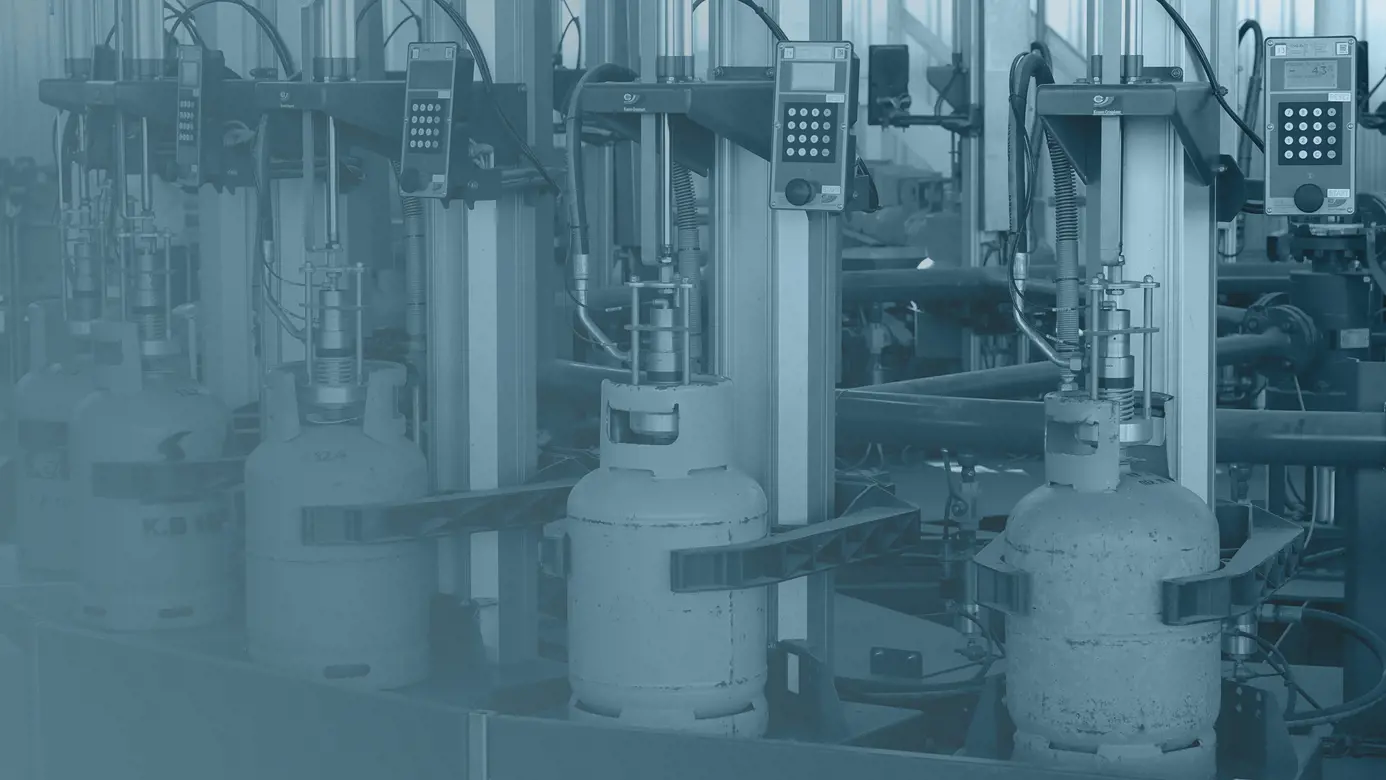Checking equipment
Modern, electronic filling machines have a high degree of accuracy, but in terms of securing accurately filled gas cylinders, they can't do the job alone. The tare encoding has to be equally accurate. And especially when it comes to filling plants with a high throughput, this can prove to be quite the challenge.
However, as overfilled gas cylinders are potential safety hazards for both filling plant staff and consumers, it's a challenge that must be met. The obvious solution is to remove the human factor by making the tare encoding process entirely automatic.
Manual equals errors
With observed error rates up to 50 percent, manual tare encoding is a common source of inaccurately filled gas cylinders. The accuracy of manual tare encoding depends entirely on the skills and concentration of the operator and is greatly affected by e.g. how much stress he is under while performing the task. With these facts in mind, Kosan Crisplant's (today known as MAKEEN Energy) engineers set out to develop a tare encoding solution that would automate the entire process, from entering the cylinder tare values to transferring them to the filling machines. The goal was an entirely touch-free system that would eliminate the possibility of human errors.
The result, a fully automatic tare reading vision unit, is based on advanced figure recognition technology and uses a specially designed camera system with associated OCR software to identify and process the data.
The end of dangerous workarounds
Manual tare encoding has its natural limitations when it comes to throughput, typically in the vicinity of 1,600 cylinders/hour. In order to speed up the process and increase the throughput, it is a very common practice in filling halls all over the world to omit one or two digits when keying in the cylinder tare manually. This means that if the tare is 15.63 kg, the operator will key in 56. Obviously, this practice compromises the filling accuracy and consequently the safety of both filling hall staff and consumers, not to mention the fact that it is costly in terms of wasted gas due to overfilling.
With a capacity beyond 4,500 cylinders per hour and a first time recognition rate of 97%, a fully automatic tare reading system can help increase the overall plant filling capacity by eliminating tare encoding bottlenecks. That will efficiently put an end to the use of potentially dangerous workarounds.
How it works
The fully automatic tare reading vision unit is designed as a tunnel with a built-in camera system. Before the cylinder enters the filling carrousel, the vision unit's OCR software reads the tare value printed on the cylinder. The vision unit then transmits the information to the filling hall data network. This ensures that every cylinder brings its own tare value and net weight into the filling system and is filled correctly. It is the system - and not an operator - that controls the order of the cylinders.
Automation can solve other safety issues too
Automation can improve filling plant and consumer safety in more ways than just by ensuring filling accuracy. Another safety issue within LPG filling is the lack of systematic identification of cylinders due for inspection. The tare reading vision unit can also be used for automatic identification of these cylinders by scanning the date of pressure test printed on the cylinder. This can be done simultaneously with the reading of tare values.
This article is based on our presentation at the Global Technology Conference (GTC) in Miami on 30th October 2014. At the GTC, World LP Gas Association invites ten leading companies from the LPG industry to showcase their most innovative and original technological ideas and show how they create new opportunities for the LP gas industry.








